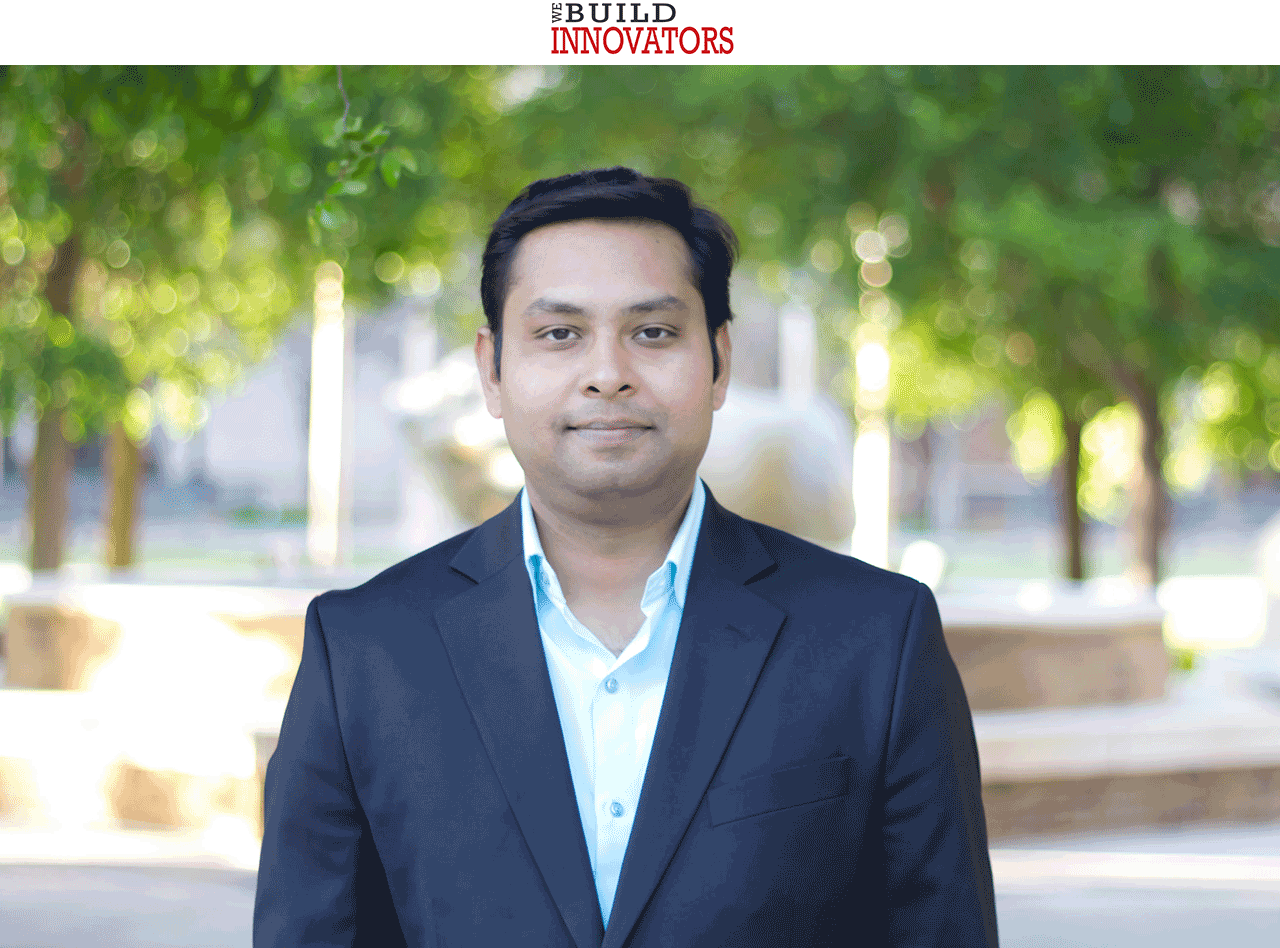Graduate Research

Pattanayak Receives Top Award For Student Paper at Physics Forum
Silicon-based electrical components are the heart of today's cutting-edge electronics. But there's something else out there that is showing great promise for emerging electronics applications. That something is vanadium dioxide, or VO2.
Milinda Pattanayak, a graduate student in the Department of Physics & Astronomy, has been conducting research on this material and recently received the 2019 Ken Hass Outstanding Student Paper Award, sponsored by the American Physical Society Forum on Industrial & Applied Physics (FIAP), for his work. The award was presented during the Society's FIAP meeting in Boston, March 4-8.
"VO2 has very interesting electronic properties," Pattanayak says. VO2 is an insulator and resists the flow of electricity. But if the applied voltage exceeds a certain threshold, its crystal structure changes and VO2 becomes metallic with high electrical conductivity. This is known as the insulator-to-metal transition (IMT). Such attributes of this material could be exploited for a plethora of emerging electronics applications, he says. His winning paper, "Current-induced resistivity switching in VO2 micro-electronic oscillators," studies one aspect of its potential.
Pattanayak is conducting his research under the supervision of Ayrton Bernussi, professor and co-director of the Nano Tech Center in the Whitacre College of Engineering. Bernussi describes Pattanayak as an outstanding and dedicated researcher, highly motivated in his focus on the development of novel electronic and optoelectronic devices that incorporate transition metal oxides—and particularly in investigating VO2 micro-channel devices.
"In order to accomplish his research tasks, he has designed, simulated, fabricated, and tested multiple VO2 devices," Bernussi says of Pattanayak's work. "This requires specialized skills and experience on semiconductor micro-fabrication and characterization techniques. He excelled on those areas, and he has been successfully fabricating and testing his own devices in our lab facilities. His results on VO2 memristor devices have prospective application in neuromorphic computing and to the memory technology industry."
In talking about VO2, Pattanayak suggests a real possibility that the material someday might have a big impact on the microelectronics industry, especially if it could be integrated with silicon in large scale.
How so? One particular class of VO2 devices can generate a certain type of electrical pulses, with a potential application towards neuromorphic computing. In simpler language, this technology functions somewhat like the human brain. In contrast, the familiar silicon chips used in traditional computing devices function by circuitry and logic; and individual device components like transistors serve as the building block for chip architectures.
The possibilities are exciting: Where roughly 20 silicon-based conventional components are needed to design a single electrical pulse generator, just one VO2 device can do the job. Besides that, VO2 has potential applications in high density non-volatile memory storage and sensors, Pattanayak says.
Winning the Hass Award has brought Pattanayak recognition from highly regarded scientists. Sung-Won Lee, professor and chair of the Department of Physics & Astronomy, says the Hass Award is highly prestigious and the selection process extremely competitive. The award was presented by physicist Usha Varshney and materials scientist Ichiro Takeuchi. Varshney is a program director for Electronics, Photonics and Magnetic Devices in the Division of Electrical, Communications and Cyber Systems at the National Science Foundation. Takeuchi is a professor at the University of Maryland-College Park's Maryland Energy Innovation Institute.
Pattanayak adds that the Hass Award is for graduate students who are working in applied condensed matter physics, his chosen field. He describes condensed matter physics as the study of material properties and its applications that broadly encompasses solid state physics, material science, semiconductor device physics and microelectronics. He says that this is an academic realm where physics meets electronics engineering.
Physics and electronics have been a lifelong passion for Pattanayak. When he was in high school—he hails from West Bengal, India—he particularly enjoyed building projects for science exhibitions. He earned his B.S. in Physics from the University of Calcutta, and his M.S. in Physics from the University of Delhi. Along the way he worked in the electronics industry. He's on track to graduate with his Ph.D. in Physics from Texas Tech in 2020.
College of Arts & Sciences
-
Address
Texas Tech University, Box 41034, Lubbock, TX 79409-1034 -
Phone
806.742.3831 -
Email
arts-and-sciences@ttu.edu
